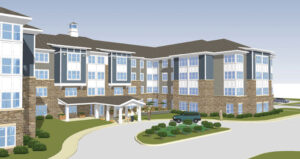Congress has passed the EB-5 Reform and Integrity Act of 2022, which reauthorizes the EB-5 Regional Center Program through September 30, 2027, increases minimum EB-5 investments, and sets aside part of the annual EB-5 immigrant visa quota for investment in rural areas, high unemployment areas, and infrastructure projects. The new law is part of the FY 2022 federal appropriations legislation, which President Biden is expected to sign shortly.
The EB-5 Regional Center Program, a subcategory of the EB-5 Immigrant Investor Program, had been suspended since June 30, 2021, when its congressional authorization expired. The new law will allow USCIS to resume processing pending cases that were held in abeyance by the agency when the Regional Center Program expired in June 2021. The law prohibits the denial of a petition based on the expiration of the program and directs the agency to continue to allocate immigrant visa numbers to petitioners whose Regional Center-based cases were filed before September 30, 2026, which includes cases filed before last year’s expiration. It is not yet clear when USCIS will take up pending cases, but agency guidance is expected in the near future.
On enactment, the statute will increase the minimum investment amount for EB-5 projects to $1,050,000, from $1,000,000. The minimum investment for targeted employment areas (TEAs) will increase to $800,000, from $500,000. The minimum investment for infrastructure projects will be $800,000. (Under regulations that were ultimately vacated by a federal court, the EB-5 investment minimum was increased to $1,800,000 for standard EB-5 investments and $900,000 for TEAs from November 19, 2019 until June 22, 2021.)
Beginning January 1, 2027, and every five years thereafter, the minimum investment amount for standard EB-5 projects will be subject to increases keyed to the Consumer Price Index. For TEAs and infrastructure projects, the minimum investment amount will be increased to 60% of the standard investment minimum.
The new law sets aside 32% of the annual EB-5 immigrant visa quota for specific types of EB-5 projects:
- 20% of EB-5 immigrant visas are reserved for foreign nationals who invest in a rural area of the United States;
- 10% are reserved for foreign nationals investing in a high unemployment area as designated by USCIS;
- 2% are reserved for investors in a new category for qualifying infrastructure projects administered by a federal, state or local government entity.
If there are unused visas in any of the three listed subcategories, those visas will be made available in the same category during the succeeding fiscal year. If not used in the succeeding fiscal year, they will be added to the overall EB-5 quota in the following fiscal year.
- Concurrent filing of EB-5 petitions and green card applications. Investors for whom an EB-5 immigrant visa is immediately available will be permitted to file their EB-5 petitions at the same time as their applications for adjustment of status to permanent residence, or file an adjustment with a pending EB-5 petition. This will enable them to obtain employment authorization and travel permission while their cases are pending.
- EB-5 processing priorities. The new law directs USCIS to give processing priority to EB-5 petitions for investment in rural areas.
- Increased monitoring and enforcement. Regional Centers will be subject to regular audits and enhanced record keeping obligations. They will also be obligated to pay an annual fee of $20,000 (or $10,000 for Regional Centers with 20 or fewer investors) that will be allocated to an EB-5 Integrity Fund.
- Federal authority to designate Targeted Employment Areas. The Department of Homeland Security will be invested with the sole authority to designate TEAs; state and local government authorities will no longer have the ability to make these designations. This provision of the new law echoes a previous regulation that was struck down by a federal court in 2021.
- Additional fees for EB-5 petitioners. Foreign investors will be required to pay a new $1,000 fee that will be allocated to the Integrity Fund.
- New safeguards for foreign investors. The new law permits good-faith investors to complete the permanent residence process despite the termination or debarment of an EB-5 entity or Regional Center, or in the event that the Regional Center Program expires in the future.






